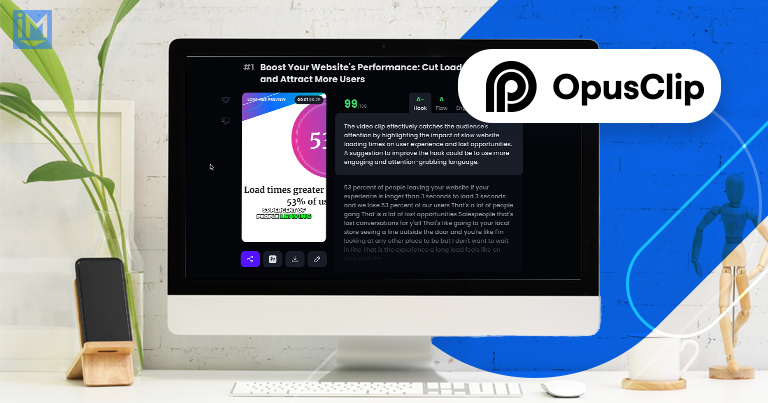When most businesses think about their approach to social media, they think about ads.
We all understand that social networks are a vital platform to connect with your audience. But ads aren’t the only way to connect. Instead, you could focus on an organic approach that resonates with your audience, provides genuine value, and stands out from the salesy clutter.
This is how I teach my clients to “show up” on social so they can build authentic connections with their buyers — all without having to spend a dime.
Below, I’ll walk you through the steps you can follow and share some examples to inspire you.
Ready? Let’s dive in.
Understanding where your audience spends its time
The first step to any social strategy is understanding how your audience uses social media. This is a crucial step that should not be skipped. Now, it’s not just important to know what networks they use, it’s also important to know how they use them.
The more information you get on the front end, the better you can avoid spreading yourself too thin.
For example, is your audience on Pinterest? Maybe, but they might not be on Pinterest in a mindset that matches what you sell. If you work in an aesthetically-focussed sector like architecture or interior design, Pinterest might make perfect sense for you. If you’re a software business, maybe not. If you’re in home improvement, it’s probably Facebook. If you’re B2B, LinkedIn is probably your best bet, but it depends on what you sell and who you sell it to.
So, you need to figure out the where and the how of your audience’s social media habits. (And while you’re at it, maybe the why and the when as well.)
My colleague Lindsey Auten put together a whole post on this topic a few weeks ago. In brief, she recommends that you follow these steps to know where your customers hang out. Each step will give you valuable insights. You should read her article, but here’s a brief rundown:
- Talk to current customers about their social media habits.
- Research your competitors to see what kinds of content they share and what their engagement looks like.
- Analyze your current approach to see what’s worked well for you.
- Start social listening with tools like Hootsuite, BuzzSumo, or Sprout Social.
- Monitor industry trends and social platform changes.
- Experiment with different content and different platforms to see what resonates.
- Engage with online communities to learn about platforms and offer value.
The more you know, the better you’ll do, so put in the work to learn about who you want to reach.
Social media is a place for connection first, business second
Social media at its core is meant for people to connect with other people. We can’t forget that. As a brand, the best way to connect with people is to offer them value. Create content that helps them solve a problem or helps them save money.
Below are some examples from brands that are helpful, not salesy. As users, we know these posts come from businesses, but we appreciate that there’s no sales pitch here. It’s just expertise they’re sharing with us.
As a first example, check out this YouTube video created by EW Motion Therapy called “Why does my knee hurt?” This content isn’t pushing physical therapy. Instead, it offers real-world solutions for a problem that millions of people face every day.
EW Motion Therapy is an Alabama-based business with brick and mortar locations. Still, they’re putting out content for the whole world to see. They’re offering value, sharing expertise, and connecting with an audience.
Next, on LinkedIn Andy Crestodina provides marketers with valuable information without going for the hard sell. Andy and his team are web developers. They’re clearly experts in the space, but again there’s no sales pitch. It’s free, helpful content for a broad audience.
Third, here’s an Instagram post from Lowe’s talking about how to solve a problem that’s honestly pretty relatable.
We know that Lowe’s sells appliances, but there’s no pitch, only value — and a touch of humor. Even though Lowe’s is a massive corporation, production value is platform-appropriate. This feels social, not commercial, and that’s the whole point.
In each case we see a brand being helpful in a way that’s totally approachable. There’s no hint of salesmanship in any of these, but there’s a clear presentation of expertise.
Notice, too, that these types of posts can be entertaining as well as informative. Social media can be fun, after all.
Be a community member
Most important of all is to remember that social media platforms are communities. Or, at least they’re supposed to be.
Communities are places that people share. So, as you’re planning on producing content, make sure you’re also planning on how to be a good community member. That means you shouldn’t just blast out posts and expect to get a following. A few reminders:
- Pay attention to the culture of the platform
- Boost other creators with likes, comments, and follows
- Engage with people in your audience
- Respond to comments on your posts
- Answer questions, share insights, and join conversations
Marcus Sheridan is a co-owner here at IMPACT. He’s also a bestselling author and a keynote speaker. He posts on LinkedIn pretty regularly, and he ALWAYS circles back to reply to comments that his posts get.
Marcus usually responds to every single comment. And as he does, he builds trust and builds his network.
Measuring success in social media for your business
Success on social media can’t always be measured by revenue metrics. You have to accept that you’re playing a long game. Building an audience takes time and requires consistency.
Engagement, follower growth, and brand awareness are key indicators of your social media strategy’s impact.
There’s no shortage of analytics tools that can help you measure how you’re doing. Don’t be afraid to adjust your approach based on these insights — but stay true to the core identity of your brand.
And remember the ripple effect. If you connect with one person, that person will have a favorable impression of your brand — and it’s possible they’ll share that impression with their network.
One person may influence five. Or 10. Now imagine if you connect with 10 people. Or 50. Or 5,000.
The social media strategy that puts customers first
As any social media user scrolls through a feed, roughly every third post is an ad. In this landscape, brands have the opportunity to stand out by being genuinely helpful, engaging, and authentic, not just another ad someone swipes past. (Although ads certainly have their place too!)
By understanding your audience, choosing the right platforms, and creating content that resonates, you can build a community that trusts and admires your brand.
To learn more about a social media strategy that drives authentic engagement, reach out to an IMPACT expert. We help businesses like yours create fans and drive revenue.












![The Massive Growth Story of Mazzella Companies [Endless Customers Podcast S.1. Ep. 44]](https://www.impactplus.com/hubfs/[Ep42]YouTube-Success-with-EC.jpeg)
![Video Experts Share Their Honest Opinions [Endless Customers Podcast S.1. Ep. 43]](https://www.impactplus.com/hubfs/[Ep44]YouTube-AI-Video-Tools.jpg)


+ There are no comments
Add yours